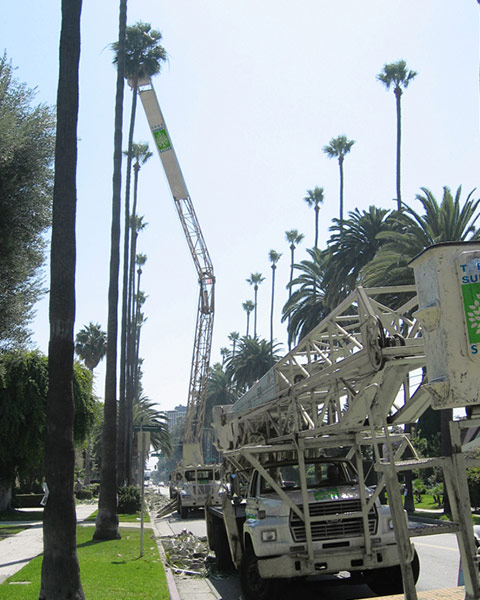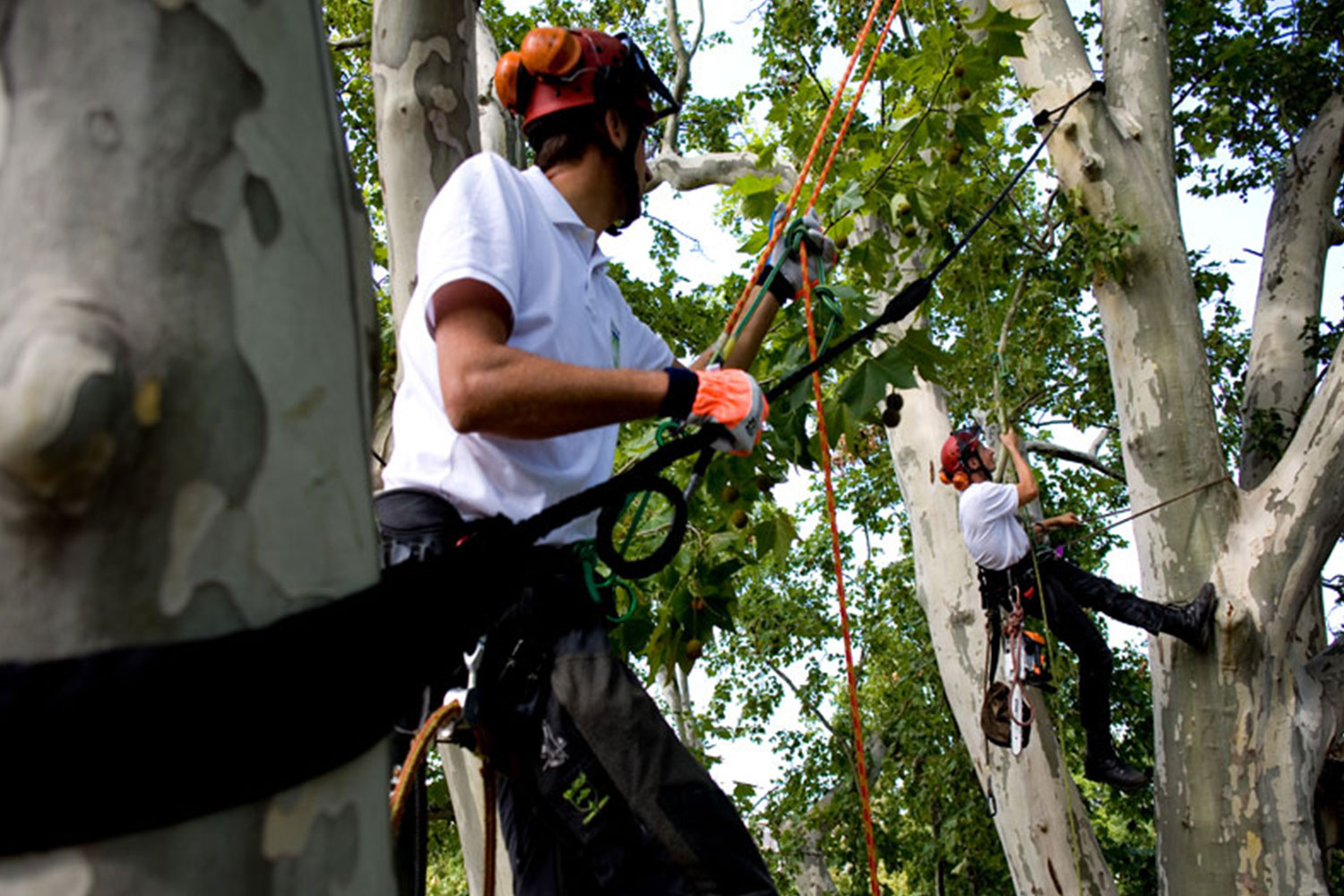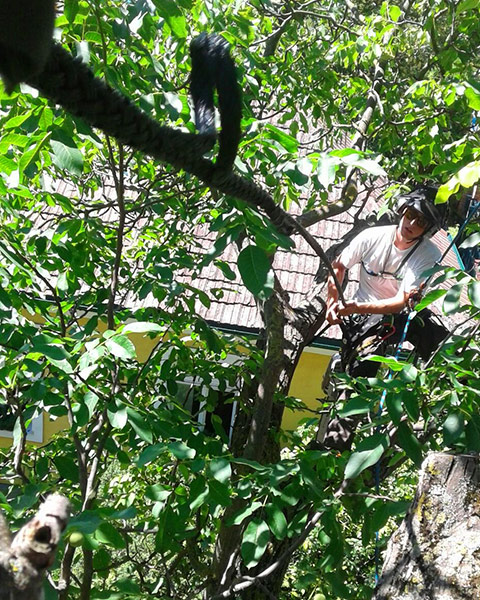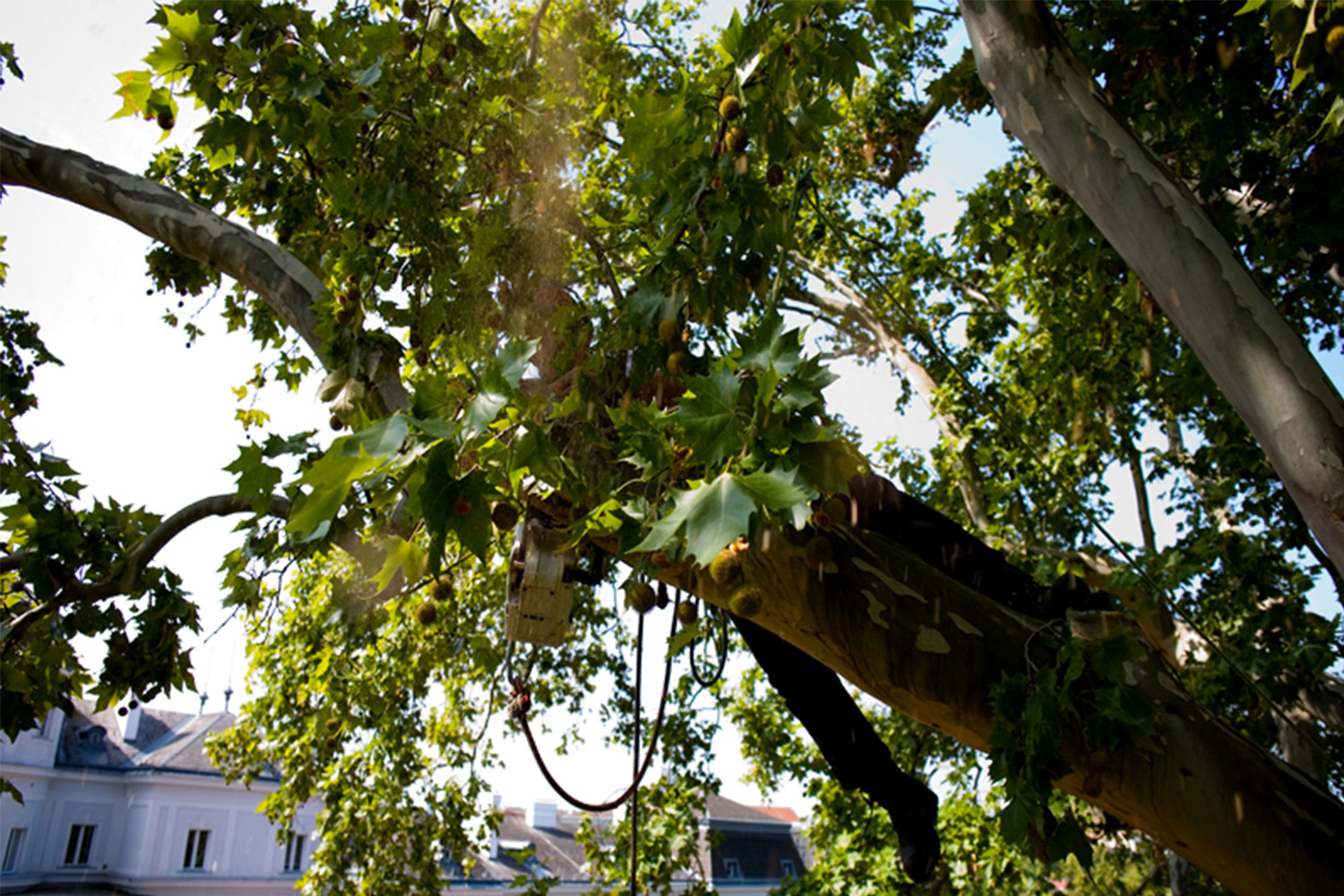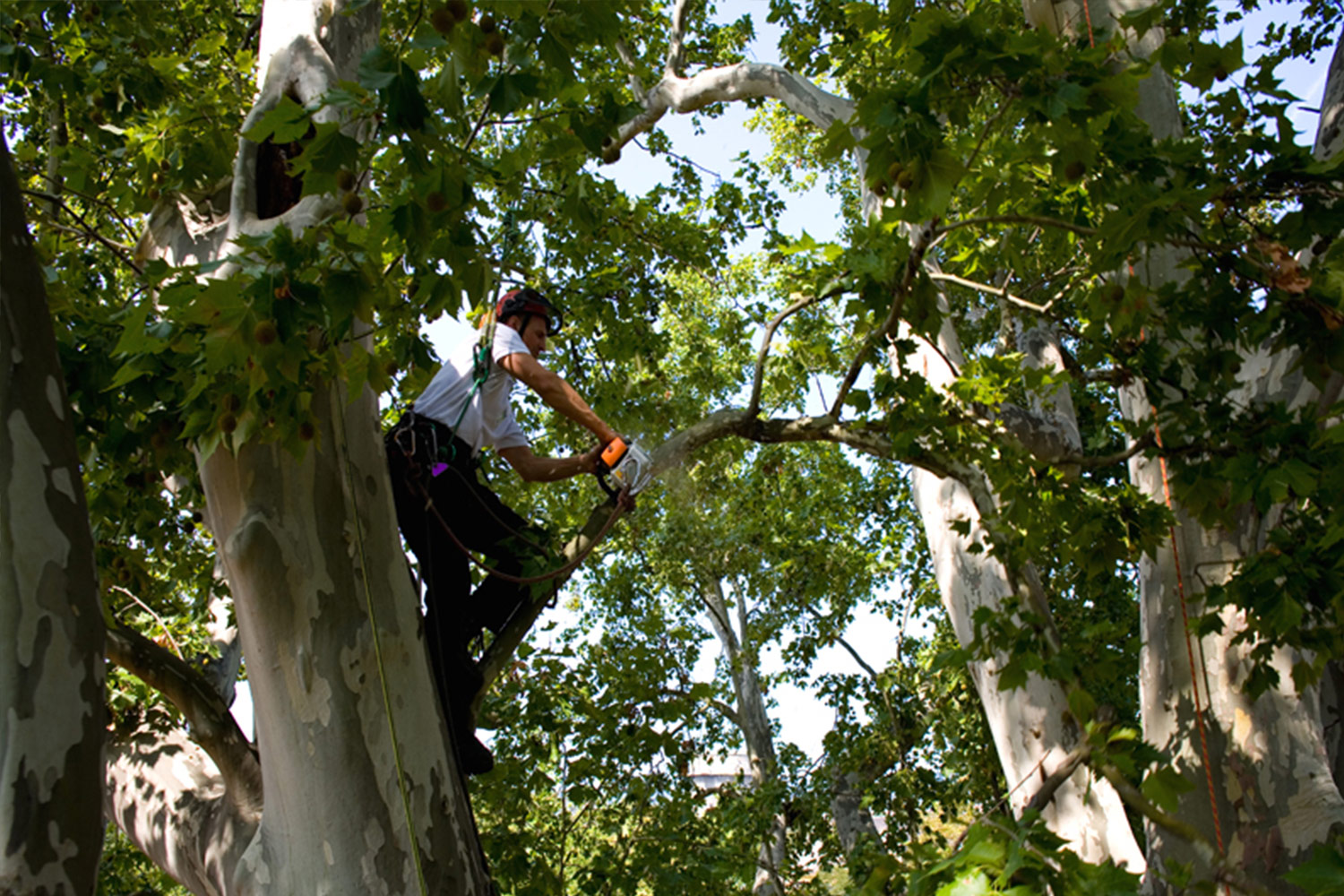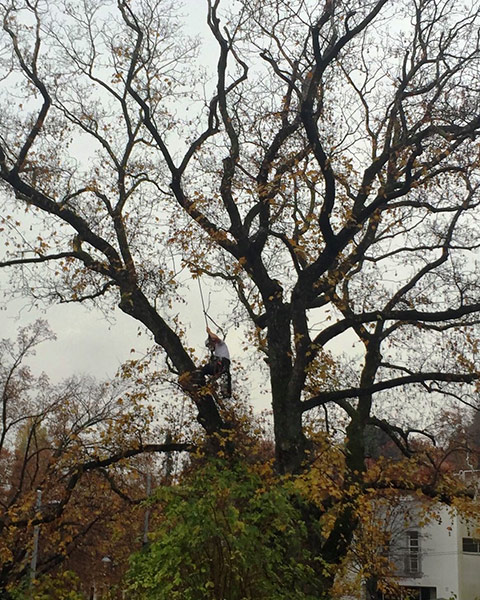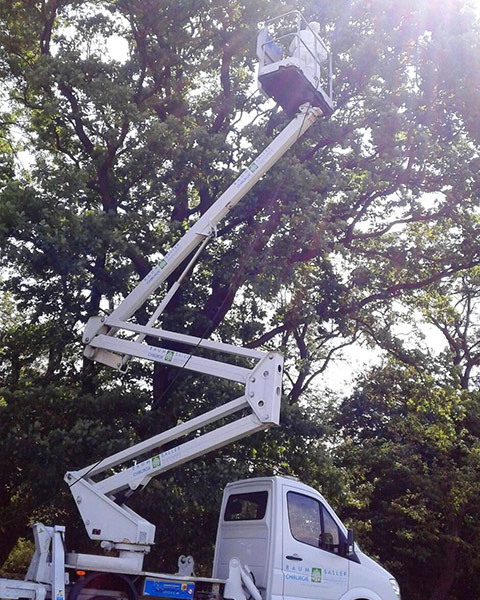Crown care
Crown care is applied for the care of the tree’s most striking visual feature. In the process, deadwood and branch stumps, fork formation, top-heaviness and branches that are too dense and interlocked are removed from the crown.
Sealing by means of a permanently elastic wound closure product is performed only as necessary, as this measure would prevent natural wound healing. During the pruning measures, attention is paid to maintenance of crown appearance as appropriate for the species or, respectively, work is focused on restoring the crown’s appearance.
Crown care should be repeated at regular intervals in order to achieve a crown structure that’s conducive to the tree’s development and in order to safeguard against thinning.
Partial crown shortening
There comes a time when any tree that’s been extending its crown into the sky for several decades, sometimes even centuries, threatens to tip over or break apart due to its upwardly migrating centre of gravity.
In most cases, partial crown shortening as part of biostatic tree control prolongs the tree’s survival by many years. Additionally, as a result of maintenance / stress-relief, pruning aberrations are corrected, risks of breakage eliminated, public safety restored (“crown securing”) and facades or neighbouring trees are cut free, thus promoting their development. The pruning that the tree receives also benefits the creation of a closed, compact crown.
Dead wood removal
Dead wood removal consists in removing dead branches from a tree in order to unfold itself. The tree height won’t be reduced.

